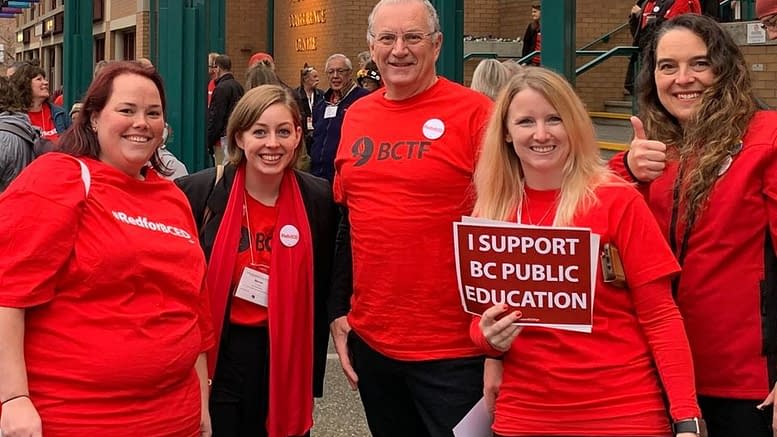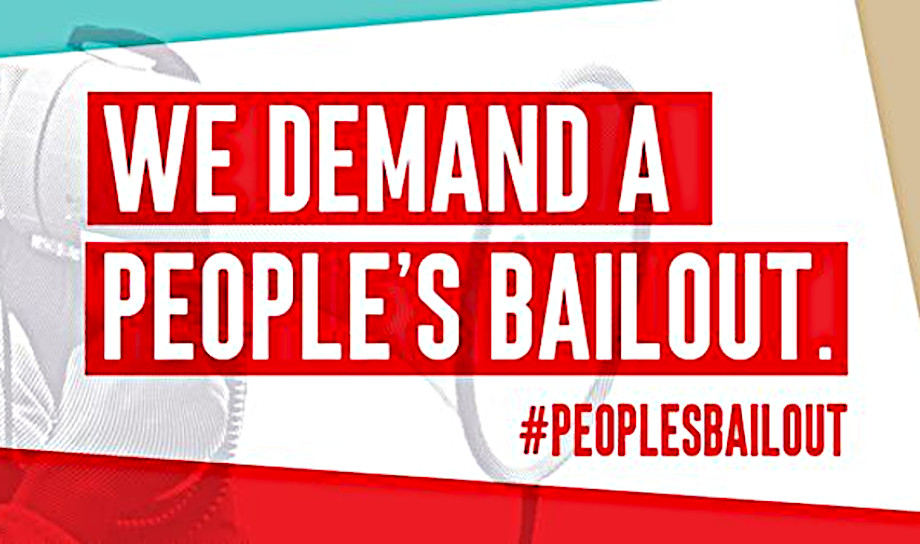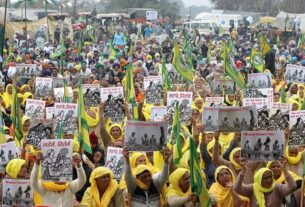Written by a BC teacher.
TOPICS:British Columbia
In British Columbia’s 2017 election, the New Democratic Party (NDP) boldly stated that “After a generation of neglect, it’s time to give schools, students and teachers the investment and support they deserve.”
More than two years later, schools, students and teachers don’t seem to deserve very much. Any increase in investment into K-12 schools has stemmed from enrolment growth and a Supreme Court ruling that went against the previous BC Liberal government, not from any NDP educational vision.
Teachers’ salaries in BC have fallen behind other provinces over the last 16 years. BC teachers have the second lowest starting salary in Canada and the lowest salary for experienced teachers west of Quebec. The NDP is offering an annual 2% salary increase in line with the province’s misnamed “Sustainable Services Mandate” for public sector salaries. Finance Minister Carole James says the NDP is balancing “fiscal sustainability while providing fair compensation.” Hard to believe with salary increases below inflation.
So how did we get here?
In 2002 the BC Liberal Education Minister, Christy Clark unconstitutionally stripped away provisions in the collective agreement related to class size, class composition, specialist teacher staffing ratios, and school-based teams (that support at-risk youth). This was the opening salvo to 15 years of teacher layoffs, cuts to specialist teachers jobs, increased class sizes, and fewer supports for students with special needs. The BC Teachers’ Federation (BCTF) engaged in a long legal battle against the Liberals resulting in a landmark victory at the Supreme Court of Canada restoring the provisions in 2016.
The restored provisions resulted in a hiring rush, alleviating crowded classrooms and restoring many specialist teacher positions. The NDP government, supported by the Greens, was required to create 3,700 new teaching positions. Yet, a teacher shortage remains and at the start of the 2019/2020 school year over 500 positions remained unfilled. As a result, uncertified or unqualified individuals have been brought in to teach and specialist teachers have been redeployed to cover classroom vacancies instead of working with students with special needs.
However, there are limitations to the restored contract provisions. As a result, the BCTF was looking forward to bargaining in 2019. In a statement, the union explained that “In a few school districts, there are actually no standards for class-size in Grades 4–12; in many school districts, there are no references to class composition, so no additional staffing is generated so that teachers can better address individual students’ learning needs. And there are no class size standards for Distributed Learning or Adult Education programs around the province. Now that bargaining has started again, it’s possible to make some improvements—by addressing gaps in protections across the 60 school districts, and trying to make improvements in some key areas.”
The NDP’s educational “vision”
The BCTF’s hopes for improvements were dashed when bargaining began with the BC Public Schools Employer Association (BCPSEA) in February. The NDP did not bother to replace the heads of BCPSEA despite winning the 2017 elections, so teachers faced the same Christy Clark-appointed team they’d faced under the Liberals. BCPSEA’s main demand was for teachers to bargain away everything they’d won in the 2016 Supreme Court victory.
So much for voting for change!
Months of negotiations ensued with teachers unwilling to concede their hard-fought provisions. Arbitrator David Schaub was brought in and on November 1, 2019, he delivered his report stating that a “disconnect” between the two sides is preventing a deal. He proposed the following compromise:
- No changes to the contract in terms of class size and composition.
- An annual 2% salary increase over three years.
- A $25.6 million fund over three years to help with classroom issues.
The BCTF representative assembly voted to reject the deal. The three year fund comes out to less than $200 per teacher in the province. The 2% salary increase is a cut as it is below inflation. Even Schaub’s report quoted the BCTF’s submission that BC teacher salaries are “stagnating” and are “falling well behind the rate of inflation, resulting in the current teacher shortage.”
As BCPSEA’s offer represents all the funds made available by the NDP, BCTF president Teri Mooring said that “the BC cabinet needs to give the employer [BCPSEA] new marching orders and put new funding on the table to get a deal that works for teachers and students.”
The NDP will not budge on the annual 2% increase. Their “Sustainable Services Mandate” includes a Me Too clause, stating that if any union can bargain a better rate all unions will get the new rate. While sounding inclusive, it merely commits the NDP to digging in their heels as any increase would benefit all provincial public sector workers. As a result, teachers are seeking salary grid adjustments that would put teachers closer to a meaningful wage increase without triggering the clause. Similar adjustments were won by the BC Government and Services Employees Union and the BC Nurses’ Union.
A full-blown strike seems unlikely at the time of writing. Teachers are starting to show their displeasure with the government with demonstrative actions: wearing red on Wednesdays and Fridays, rallying at the NDP Convention, etc. Bargaining is to continue in December. Time will tell whether the NDP will listen and act on their 2017 promises or whether it will try to impose a settlement.
Can the NDP Deliver Change?
Aside from the problem of stagnant salaries, the NDP is not improving public education. In the 2018-19 school year BC funding per student lagged $1,800 behind the Canadian average. BC’s share of spending on public education as a share of GDP was 2.48% compared to the 3.36% national average. After a short boost following the Supreme Court win, K-12 operating grants are once again not keeping up with inflation. Only 3% of the BC NDP’s much vaunted $1 billion in “new” education money actually goes towards additional supports to schools, teachers and students. The NDP is simply not providing the funding needed to adequately fund public education.
Services are expensive, we get it. But the BC NDP is unwilling to do what it takes to provide well-funded services and a clean environment.
Part of the problem is the NDP’s refusal to roll back the corporate tax cuts introduced by the Liberals between 2002 and 2015. After their electoral win, the NDP raised corporate taxes 1%, bringing the rate to 12%, but this is still a far cry from the 16.5% rate prior to Liberal tax breaks for big business in 2001. While the Liberals passed many other tax breaks for the rich, these corporate tax breaks alone mean that BC is missing out on billions of tax dollars every year.
The NDP is also continuing the Liberals’ tax cuts and subsidies to the oil and gas sector. From 2012 to 2017 Christy Clark extended $1 billion in the form of tax credits to the sector. Keeping this tradition alive, in April the NDP voted with the opposition Liberals to approve a $40 billion dollar LNG project, as well as a $6 billion tax break for LNG Canada’s project in Kitimat. The tax break was meant as an a bribe for Shell Canada and others to invest in the largest private sector project in Canada’s history. The province claims that the project will produce $23 billion in government revenues over 40 years. However, this is speculation and, if true, amours to $500 million a year, 1%of the BC annual budget. Too bad the LNG project is completely incompatible even with BC’s inadequate climate change reduction goals and will contribute to making the planet uninhabitable.
The NDP wants to play down the middle, thinking it wins votes. But maintaining corporate welfare and tax cuts for the rich starves public services and workers of funds. The “Sustainable Services Mandate,” with wages that do not keep up with inflation, is not sustainable for workers. However, it does sustain the super-wealthy. Refusing to tax the rich means no $10/day daycare, an inadequate housing policy, no real investment in a Green Economy, no adequate funding for public services and a climate crisis. It results in policies for the rich rather than programs that benefit workers and young people.
I attended a decently funded middle school, where I learned about climate change. Today I teach my students in non-ideal conditions about the world leaders’ failure to address climate change. In another 20 years, I don’t want to be living in poverty and teaching (if public schools still exist) about how governments did nothing to stop my students’ misery in the midst of climate catastrophe.
This is a real fear on recent trends. The BC Liberals take the province back three steps back and when the NDP is the government it moves the province one step forward, so we are going backwards. This is why BC workers and young people don’t need a so-called “progressive” party, like today’s NDP, we need a party for the working class that taxes the rich and takes key sectors of the economy into public ownership so that we can look after the needs of society today and in the future.
Anger and struggle are growing around the world. This will come to BC and change the political landscape. Teachers, young people, all who value public services and especially socialists, will fight for this change.



